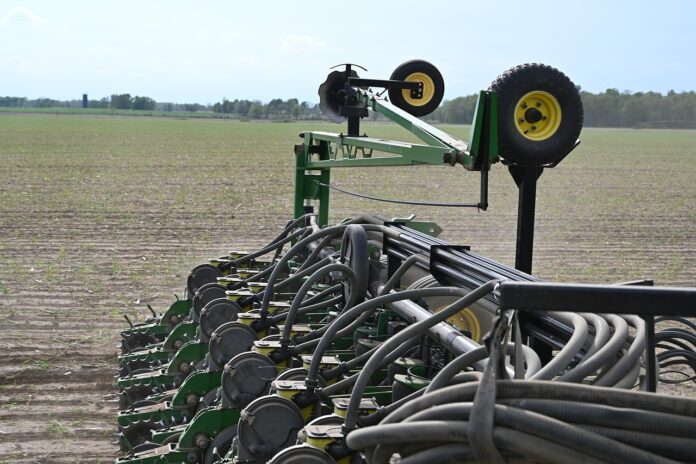Grain markets finally printed some good news last week in the form of a key reversal in July corn futures and a 17-cent gain in July soybean futures. Adding to the gains in spring crops, all three wheat futures markets posted gains, with Chicago wheat futures up 27 cents.
This feels for the moment like we found a bottom in markets that had gone down even when they had good news. After watching the markets May 8, I am nervous that this was just a bounce on the way lower.
Reversal
Yes, corn had a key reversal last week. In fact, it finished the week 27 cents off the low. However, after hitting a high of $6 May 8, it closed unchanged and then had lost five and a half cents in the May 8 evening session so far.
We were most recently trading at $5.91. It will take a few more days of trading to get any confidence that we are headed substantially higher. Similarly, December corn futures gained over six cents for the week, but they lost a nickel during the day May 8, and in the evening we were over six cents lower. That does not look like a bullish market.
The reality is that the old and new crop have different reasons to trade their way into the middle of this year. The old crop price is a function of the supply of corn from the 2022 crop, added to exports and domestic demand features.
The new crop is more a function of planting weather and assumptions about the size of crop we will grow in 2023. What will the crop be?
Planting
We will get the first production numbers from our friends at U.S. Department of Agriculture May 12. We are, at this point, assuming good planting and growing conditions, and assuming significantly more acres than we planted last year.
If you live in Ohio, you may think that timely planting is just not going to happen. It feels like we are getting late, and most farmers I talk to have planted little or no corn. Those that did planted it the first 10 days of April, and are not confident that they made a good decision doing that, what with the cool, damp weather since then.
Ohio is actually at 11% planted, up just 1% from last week and now lagging the 17% average. The first farmer I talked to this morning was in the process of dragging a track hoe to a field that had standing water on it.
Fixing tile lines was not what he really wanted to be doing today, but there is hope that the temperatures of last week in the 40s are this week going to be 70s. Then, we will see a lot of planting and a little sleep for a few days.
I participated in my regular Monday morning Midwest conference call as usual, and heard most farmers and marketing advisors talking about having much of the crops planted. They seemed surprised that I could not tell them Ohio farmers were hard at it.
In fact, when the USDA Crop Progress Report came out, most of them had overestimated how far along the planting was. The U.S. is 49% planted, and that is 7% ahead of our five-year average.
Remember, the market assumes that 75% of the corn will be planted by May 15. Traders have been assuming that would happen, and we would not see loss of yield from late planting. However, we have just a week now to plant 26% of the crop. I wonder if that is possible.
Soybeans
Now, looking at soybeans we see a similar gain last week of 17 cents in July futures. I would argue that, given the relative prices, this is much less of a gain compared to the corn.
The big bump came May 5, with 18 3/4 cents better for the day. That felt like a turnaround until we took almost four cents off May 8, and we have lost another nickel in that evening session so far.
July soybeans were trading at $14.28 1/4 May 8, and that is a long way from the $16 that we hoped for a couple of months ago. It felt a lot better when $16 seemed possible, and we had a shot at $7 corn.
Inputs
It helps that some of our inputs have gotten cheaper than we expected, especially nitrogen fertilizer. Of course, much of the inputs were priced and paid for before spring to prevent us having to pay the big prices now, which has not happened.
It is somewhat of a mystery why the futures price of nitrogen fertilizers at the Gulf have not boomed. The Upper Mississippi is closed for high water, and we had predicted that we would be short of nitrogen because we had cheap natural gas and the cheapest fertilizer.
We exported it all winter and expected to run out this spring if we did not have record imports moving up the Big Muddy. We were wrong!
The trend for planting soybeans the last few years is to plant them in April, even before corn. Some of those acres got frozen off this year, but the USDA figures for planting progress show 35% done versus the normal 21%, even with slow going in the east.











